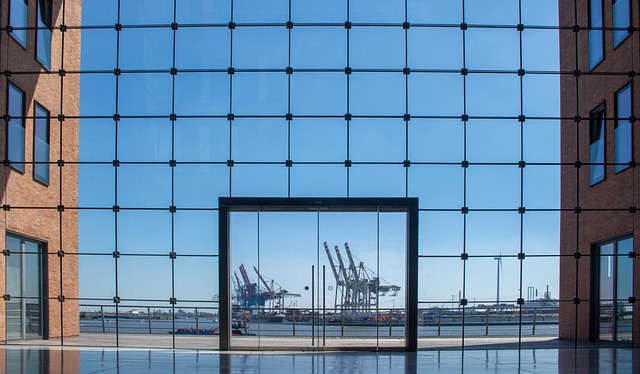Location-based logistics leverages real estate assets to optimize warehouse, distribution center, and retail space management, reducing transportation costs and delivery times. Real estate dynamics like proximity to markets, infrastructure, and labor pool are key factors in logistics planning. Steady demand for real estate and construction materials ensures supply chain stability and urban growth. Infrastructure enables efficient goods movement, supporting robust supply chains and consistent market demands, while modern infrastructure attracts industrial investments. This symbiotic relationship drives urban development and logistical efficiency for sustainable market performance.
In today’s interconnected world, steady demand for logistics remains a cornerstone of economic stability. This article explores three key aspects contributing to this consistent demand: location-based logistics as a real estate advantage, supply chain stability, and infrastructure’s role in maintaining consistent market needs. Understanding these elements is crucial for businesses aiming to optimize operations and capitalize on the robust real estate opportunities within their logistic networks.
Location-Based Logistics: A Real Estate Advantage

Location-based logistics is a strategy that leverages an organization’s physical locations, often tied to real estate assets, to gain a competitive edge. By optimizing the placement and management of warehouses, distribution centers, and retail spaces, businesses can reduce transportation costs, minimize delivery times, and enhance customer satisfaction. This approach is particularly advantageous in today’s fast-paced market where efficient supply chain management is critical.
Real estate plays a pivotal role here, as strategic choices regarding land and property can directly impact operational efficiency. Proximity to target markets, availability of transportation infrastructure, and local labor pool are key factors that influence logistics planning. Companies that understand these real estate dynamics can establish robust distribution networks, ensuring steady demand is met with timely and cost-effective delivery solutions.
Supply Chain Stability: The Silent Steady Demand

In the dynamic landscape of global trade, a silent yet steady demand often goes unnoticed—one that lies at the heart of supply chain stability, especially in the real estate sector. This consistent need is driven by logistic requirements, where properties and construction materials must be sourced, transported, and delivered efficiently to meet market demands. Unlike seasonal fluctuations or temporary trends, this steady demand ensures a constant flow of goods and services, creating a robust foundation for businesses and communities alike.
The implications are profound, especially in an era where supply chains are becoming increasingly globalized and complex. Real estate developers, for instance, rely on this stability to plan projects, secure investments, and manage costs effectively. By understanding and catering to this underlying demand, industry players can navigate the challenges of logistics, ensure timely deliveries, and ultimately contribute to the growth and resilience of urban environments.
Infrastructure's Role in Ensuring Consistent Demand

The role of infrastructure in ensuring steady demand cannot be overstated, especially in the context of real estate and logistic needs. Well-developed transportation networks, including roads, railways, and ports, facilitate the efficient movement of goods and people, keeping supply chains intact. This ensures that businesses can consistently meet market demands, contributing to a stable and predictable consumer base.
Moreover, modern infrastructure supports the growth of industrial hubs and business centers, driving economic activity and attracting investments. Real estate developers often consider proximity to robust infrastructural assets as a key factor when choosing locations for new projects. This mutual dependency—where improved infrastructure fosters demand, and consistent demand stimulates infrastructure development—underpins the dynamic equilibrium between urban growth and logistical efficiency.






